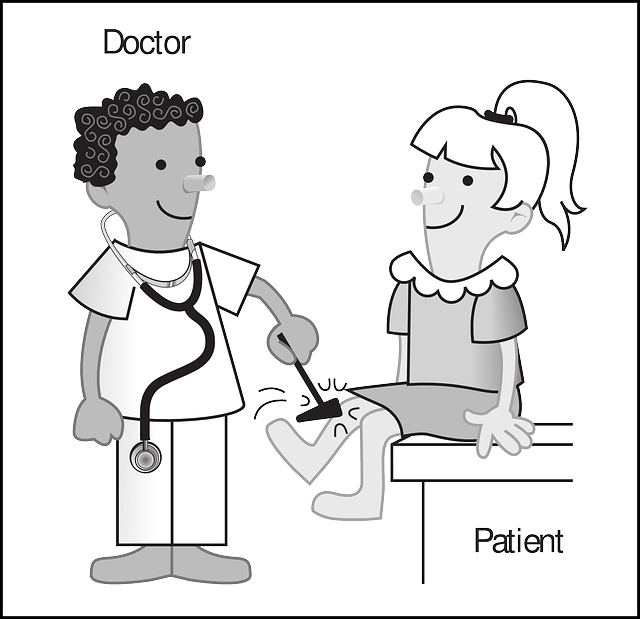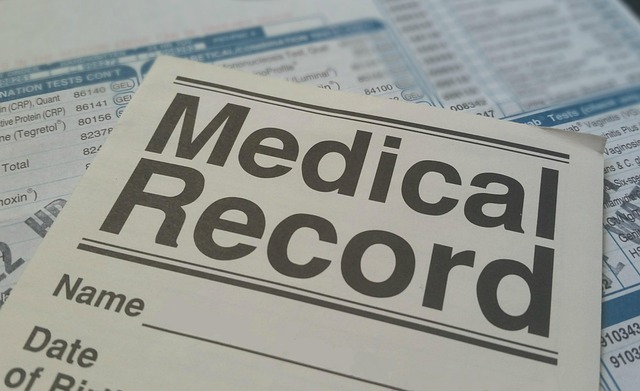Translation services for Patient Discharge Summaries (PDS) in the UK are essential for ensuring clear communication between hospitals and community settings, particularly catering to patients with limited English proficiency or multilingual backgrounds. These services adhere to stringent legal requirements like the Data Protection Act 2018 (DPA) and GDPR, as well as industry standards set by bodies such as NICE. By bridging linguistic gaps, these translations enhance patient understanding, adherence to care plans, and overall satisfaction. They are especially crucial in a diverse UK healthcare landscape, where accurate interpretation of complex medical information prevents errors and improves safety. Compliance with formatting requirements is maintained, facilitating smoother transitions from hospital to home care.
In the UK healthcare sector, accurate and compliant patient discharge summaries are vital. These documents play a crucial role in ensuring seamless patient transitions between care settings. With increasing cultural diversity, translation services have become integral to meeting legal requirements and enhancing patient safety. This article explores the intricacies of patient discharge summaries, from understanding their purpose to navigating compliance challenges. We delve into key regulations, the value of translation services, common pitfalls, and best practices for healthcare professionals to excel in creating effective, compliant summaries, especially with a focus on Translation Services for Patient Discharge Summaries UK.
- Understanding Patient Discharge Summaries in UK Healthcare
- Legal Requirements for Compliance: Key Regulations and Guidelines
- The Role of Language Translation Services
- Common Challenges in Achieving Compliance
- Best Practices for Ensuring Accuracy and Clarity
- Case Studies: Success Stories in Discharge Summary Compliance
Understanding Patient Discharge Summaries in UK Healthcare

Patient Discharge Summaries (PDS) play a crucial role in UK healthcare, acting as a vital bridge between hospital care and community or home settings. These summaries provide a comprehensive translation of a patient’s medical journey, detailing their diagnosis, treatment plan, and post-discharge instructions. For multilingual patients or those with limited English proficiency, accessing this information through professional translation services becomes indispensable. Translation services for Patient Discharge Summaries UK ensure that all patients receive clear and accurate medical information tailored to their linguistic needs.
Effective PDS translation goes beyond word-for-word interpretation. It involves cultural adaptation to convey medical concepts accurately in the patient’s native language, ensuring understanding and compliance with post-discharge care plans. This is particularly important given the diverse linguistic landscape of UK healthcare, where professionals must communicate effectively with patients from various ethnic and cultural backgrounds.
Legal Requirements for Compliance: Key Regulations and Guidelines

In the UK, patient discharge summaries are subject to stringent legal requirements and industry guidelines to ensure quality, accuracy, and consistency in healthcare documentation. The primary regulatory framework governing this aspect is the Data Protection Act 2018 (DPA), which sets out data privacy principles for handling personal information, including sensitive health data. Additionally, the General Data Protection Regulation (GDPR) further reinforces these rules, emphasizing the need for clear and understandable patient records.
Compliance with translation services for patient discharge summaries UK is also governed by specific guidelines from bodies like the National Institute for Health and Care Excellence (NICE). These guidelines provide standards for the content, structure, and language of discharge documents to ensure effective communication with patients upon their release from healthcare facilities. Adhering to these regulations not only guarantees legal compliance but also facilitates improved patient care and satisfaction by ensuring clear and accessible information exchange.
The Role of Language Translation Services

In the UK healthcare sector, ensuring clear and accurate communication is paramount, especially when it comes to patient discharge summaries. Translation services play a vital role in facilitating effective communication between healthcare providers and patients from diverse linguistic backgrounds. These services are essential for translating complex medical information contained in discharge summaries into languages that patients understand, ensuring they receive appropriate post-discharge care instructions.
With the increasing diversity of patient populations, translation services for patient discharge summaries in the UK have become indispensable. Professional translators with medical expertise can convey intricate medical concepts accurately, minimising potential errors or misunderstandings. This is particularly crucial as miscommunication may lead to adverse outcomes and increased healthcare costs. Therefore, integrating translation services into healthcare practices is a step towards improving patient safety and satisfaction across the nation.
Common Challenges in Achieving Compliance

Achieving compliance with UK healthcare regulations for patient discharge summaries can be fraught with challenges, especially for organizations that lack dedicated resources or expertise. One significant hurdle is the accurate translation of medical information into various languages, as many patients in the UK have diverse linguistic backgrounds. Without professional translation services, there’s a risk of critical details being miscommunicated, leading to potential errors in patient care and follow-up.
Another common challenge lies in ensuring consistency and adherence to specific formatting requirements set by the National Health Service (NHS) or other healthcare bodies. Discharge summaries must be clear, concise, and accessible to both medical professionals and patients. This often requires specialized knowledge to navigate complex clinical terminology while maintaining clarity and simplicity, which can be a daunting task for those without formal training in medical documentation.
Best Practices for Ensuring Accuracy and Clarity

Maintaining accuracy and clarity in patient discharge summaries is paramount to ensuring quality healthcare in the UK. These documents serve as a crucial bridge between hospital care and the primary physician or patient’s home care setup. Best practices for writing effective discharge summaries include providing comprehensive yet concise information. Healthcare professionals should document all relevant medical details, treatment plans, and instructions for post-discharge care. Every piece of information should be easily understandable to avoid misinterpretation.
Translation services play a vital role in making these summaries accessible to a diverse patient population in the UK. With a growing multilingual community, ensuring that discharge summaries are translated accurately guarantees patients from various linguistic backgrounds can fully comprehend their post-discharge care instructions. This not only improves patient safety but also enhances satisfaction and adherence to treatment plans.
Case Studies: Success Stories in Discharge Summary Compliance

In the pursuit of enhancing patient care and ensuring smooth transitions from hospital to home, many UK healthcare providers have turned to translation services for patient discharge summaries. These case studies highlight successful implementations where accurate and timely translations have significantly improved compliance with UK healthcare standards. For instance, a large urban hospital faced challenges in communicating with a diverse patient population, leading to delays in discharge. By partnering with professional translation services, they were able to deliver personalized, language-appropriate discharge summaries, resulting in faster patient releases and reduced readmission rates.
Another notable example involves a rural community clinic serving a mainly elderly demographic. To address the complex medical needs of their patients and ensure understanding at home, the clinic integrated translation services into their routine discharge procedures. The outcome was a marked improvement in patient adherence to post-discharge instructions and a noticeable decrease in relapses, demonstrating the critical role of effective communication in healthcare compliance. These success stories underscore the importance of professional translation services for patient discharge summaries in the UK healthcare setting.
Ensuring patient discharge summaries comply with UK healthcare regulations is vital for effective communication and quality care. By understanding legal requirements, leveraging translation services for multilingual patients, and adopting best practices for accuracy and clarity, healthcare providers can navigate the complexities of discharge documentation. The case studies presented highlight successful strategies, demonstrating that compliance can be achieved while fostering better patient outcomes and satisfaction. For those seeking to optimize their processes, integrating translation services into patient discharge summaries in the UK is a key step towards enhancing care coordination and overall patient experience.



